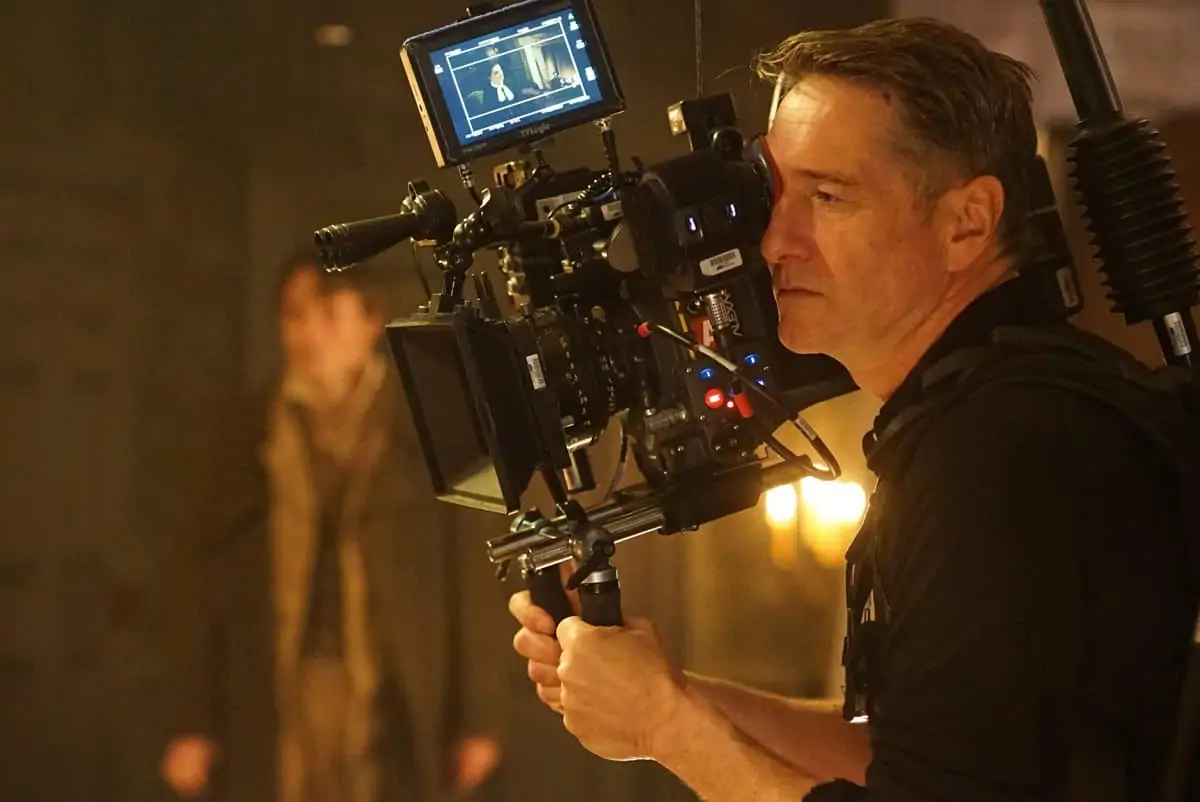The Human Touch
President's Perspective / Mike Eley BSC

The Human Touch
President's Perspective / Mike Eley BSC
Every generation believes it is facing crises and dilemmas never before experienced, that its problems are unique and that, somehow, now is a turning point. As I write, during the dog days of August, the news cycle churns out yet more stuff to cause us anxiety as we try to enjoy our holidays – climate change-induced heatwaves, loss of species, electoral interference and Brexit. A veritable smorgasbord of worrisome things.
And then this, something very close to home: ‘Robots Will Take Our Jobs’. All too feasible you think and, seeing how the technology has developed within our own filmmaking industry, perhaps all too predictable.
I recall standing in a camera shop some years back, trying to buy a stills camera from a man who insisted that I need never adjust the focus myself again, since the sensor in the camera was “way quicker and smarter than you”. I took umbrage and I wasted far too much time trying to convince him that that wasn’t the point. (I avoided comparing my grey-matter to the electronic synapses of a DSLR). It’s what I see and feel when I look through the viewfinder that really counts. It’s called “connection”.
Reading some of the academic studies relating to the subject of whether robots will take over our jobs, I came across the phrase “bottlenecks to computerisation”. Basically, there are three categories of work practice that humans are considerably better at than Artificial Intelligence and, more importantly, will remain better at for the foreseeable future: Perception and Manipulation, Creative Intelligence and Social Intelligence.
I can’t tell you how reassured I was by discovering those bottlenecks. Better (admittedly dry) descriptions of the cinematographer’s remit you’d be hard pressed to find. And every sub-section of those three headings was a nail hit squarely on the head. Under ‘Perception and Manipulation’ for instance there was the query, “How often does this job require getting into cramped awkward positions?”. And then this under Social Intelligence, “Persuading others to change their minds or behaviour”. Or in DP-speak, how to convince an actor that, despite us all embracing free-form movement across the set, it really would be good on this occasion if they hit that mark. Just this once.
"A few weeks back, I sat in with a small audience to watch a screening of a newly-discovered and restored piece of film - shot in the last years of the 19th century, in Paris, on an 80mm format. I have to say, it was perhaps the most emotional and moving piece of film I’ve seen in a very long time."
- Mike Eley BSC
As I’ve said before in these pages, technological advancement is a fantastic thing and our daily working lives are enriched and enhanced by the results of rigorous R&D. But, ultimately, the upshots are the tools with which we do the job. Nothing more, but certainly no less. Our affinity with those tools is what makes us who we are on-set. It could be summed up with two simple words: Art & Technology. The application of creative intelligence, thought and endeavour through the use of optical and image-capturing tools.
The creative eye has always sought tools to execute the vision. David Hockney has shown how many of the great Renaissance artists used optics to achieve perspective, scale and proportion.
We all dream of achieving such visual impact (“every frame a Caravaggio!”), but it is a reminder that it’s the decisions made, and the execution, that mark the difference. It’s the personality, the human touch, that tells the story.
A few weeks back, I sat in with a small audience to watch a screening of a newly-discovered and restored piece of film. It was shot in the last years of the 19th century, in Paris, on an 80mm format. It was one shot, lasting no more than forty-five seconds of the Place de la Concorde in the middle of the day. Pedestrians strolled, horses and carriages went by, a dog watched its owner chat to a passerby. The sun was high and the light was flat. Content-wise, it was as banal as that.
But, I have to say, it was perhaps the most emotional and moving piece of film I’ve seen in a very long time. Yes, I marvelled at the resolution (80mm, eat your heart out Christopher Nolan) and the evident quality of the lens. But it was the human elements involved that caught my breath; not only the ones depicted going about their 19th century lives, but also the one behind the camera, using this weird and exciting device that, I doubt, anyone on that street would have recognised, patiently turning the crank handle to an internal metronome, a ditty of the day perhaps. The camera was put there; the composition was made ‘just so’. And with those choices made… ‘Turn over’. A human did that.
Fast-forward a hundred and twenty years. In another small but significant victory for the choices that humans make, comes news that future UHD 4K televisions will have an opt-out feature, enabling viewers to bypass the factory settings of their TV and set-up their picture based on information and guidance provided by those who created the images – the cinematographers. That would be a pleasing convergence of Art & Technology, one that would be of benefit to all. We’ll take that good news.
Mike Eley BSC
President
British Society Of Cinematographers










